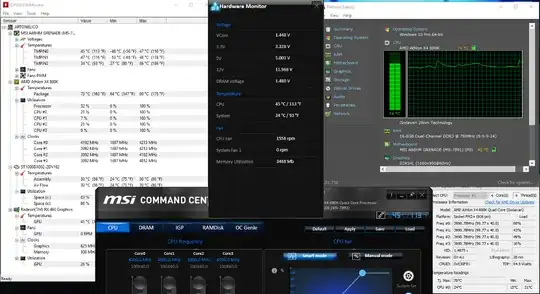First things first: Make sure that you have correctly applied the thermal paste (not too little, not too much, no air bubbles,...) and make sure that your CPU's fan is running (and is specified for your CPU).
Also note the "SOLUTION UPDATE" in this related question called "CPU Temperature sensor wrong?" that shows that heat sinks also can fail with increasing age.
Anecdote: I have two boards from the same (usually high-praised) manufacturer with different generation chipsets that both show wrong CPU temperatures - even after RMAing them. It's clear to me that the CPU is right and the motherboard is wrong because of the temperature curves:
- In idle and with the fans set to 100%, the CPUs state that they are around 5-10°C warmer than the ambient temperature, while the motherboards believe them to have 55°C.
- At full load (e.g. prime95) and with the fans set to 100%, the CPUs slowly heat up and get to around 80°C, while the motherboards jump around between 55°C and 57°C.
Conclusion / Answer: Believe the more realistic temperature curve. Usually, the motherboard's manufacturer's software will rely on the values from the motherboard, only, so cross-check it with tools like Speedfan, HWMonitor, etc.p.p. and their read-outs. Note that fans set to 100% are important for these tests, as an automatic fan speed will influence the CPU's temperature and vice versa.
Alternative answer: You could try to use a relatively precise laser thermometer and read the temperature of the CPU's heat sink on a place very close to the CPU - it will not tell you the CPU's temperature, but it will be (considerably) cooler than the CPU itself. So if your heat sink is 70°C warm, then your CPU will have a temperature of >=70°C. Now you know which software to trust in. Note that it might make sense to chose a lower fan-speed for this test (not too low, though!), as less fan movement will cool the heat sink down less, therefore making your readings more accurate.
Further problems with wrong CPU temperatures: The motherboard relies on its own values when it comes to controlling the fans, therefore, a value wrong value (e.g. between 55-57°C) is no good.
So if you face a similar problem, you might want to use a fan controller (software/hardware). When it comes to that, I prefer Speedfan: It is free, it supports almost every hardware, it does not eat up all your computer's resources, and it is very, very customisable. But that's just a suggestion: there are many tools out there that will do the job.
Note that Speedfan tends to overwhelm new users with all its values and options -but of course, there are guides in the internet on how to set it up, and in reality, it really isn't that complicated.
I will include a small, very incomplete step-by-step guide here:
CoreXY-temperatures are the ones from the CPU itself, while TempXY will mostly refer to values from the motherboard. You can
rename all of them in the configuration-menu with F2 - use
the motherboard's manufacturer's software and cross-check which value
is which, then name them accordingly.- Uncheck all values that you don't need - it will make your life easier.
- In the
Temperatures-tab, you can configure which fan is assigned to which sensor - e.g. Core0 and Core1 should both have a tick on
Fan CPU. Also, set up proper Desired and Warning temperatures -
that way, the Automatic configuration will work.
- Go to
Advanced and select your motherboard. Change the PWM XYZ modes to Manual (and check Remember it). Now, Speedfan can control the fans.
Even worse problems occur if the CPU states higher temperatures than it actually has and if you use your computer for CPU-intensive tasks (rendering videos/3D, maybe gaming,...), because it will throttle down earlier than it would have to, in an attempt to protect itself from overheating. In my limited experience, I have not yet seen a case of bad CPU temperature readouts, and the only way to get around that thermal throttling would be to replace the CPU.
